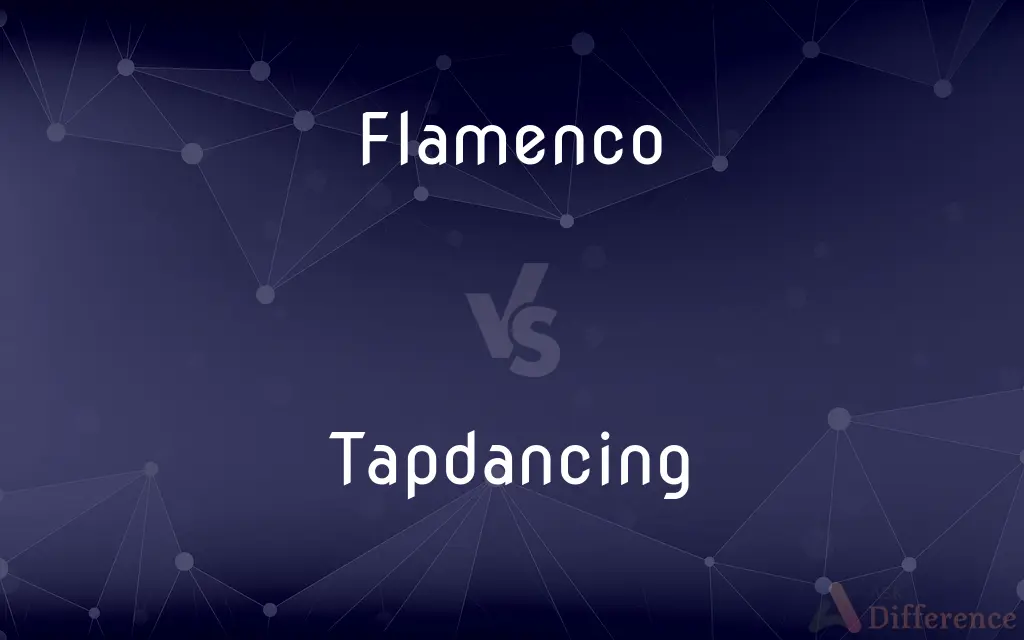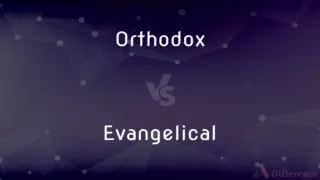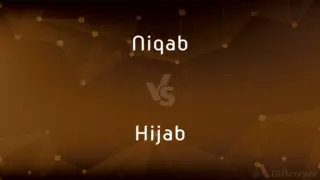Flamenco vs. Tapdancing — What's the Difference?
By Maham Liaqat & Fiza Rafique — Updated on April 26, 2024
Flamenco is a highly expressive Spanish dance characterized by percussive footwork, intricate hand and arm movements, and vibrant costumes, whereas tap dancing is an American dance form known for rhythmic tapping of the shoes, emphasizing musicality.

Difference Between Flamenco and Tapdancing
Table of Contents
ADVERTISEMENT
Key Differences
Flamenco originates from the Andalusian region of Spain, incorporating dance, song, and guitar, reflecting a fusion of Spanish cultural influences. Whereas tap dancing originated in the United States, emerging from African American communities as a form of percussive dance that focuses on creating rhythmic sounds with tap shoes.
Flamenco is characterized by its emotional intensity and is often a solo dance that expresses a narrative or emotion through movements and rhythmic stamping. On the other hand, tap dancing can be performed solo or in groups, primarily focusing on musicality and rhythm rather than conveying specific emotions or stories.
In flamenco, the dancer's outfit and the use of accessories like fans and shawls play an important role in the overall performance, enhancing the expressiveness and aesthetic of the dance. Conversely, tap dancers often wear simpler costumes that allow freedom of movement, with the shoes being the most crucial part of the attire due to their role in producing sound.
Flamenco music typically involves guitar playing, singing, and sometimes palmas (handclapping) or cajón (box drum), supporting the dance with a complex blend of rhythms. Whereas, tap dancing uses the sound of the tap shoes themselves as an integral part of the performance, often accompanied by jazz or other forms of lively music.
Flamenco dancers use a technique called 'zapateado' for their footwork, which involves rapid heel-and-toe tapping that is less about making noise and more about rhythm and posture. In contrast, tap dancing involves the use of shoes fitted with metal taps to accentuate the beat, creating varied tones and sounds through different tapping techniques.
ADVERTISEMENT
Comparison Chart
Origin
Andalusian region of Spain
United States
Focus
Expressing emotion through dance and music
Creating rhythmic and musical patterns
Performance Style
Often solo
Solo or group
Key Elements
Emotional intensity, hand and arm movements
Rhythmic tapping, musicality
Typical Attire
Vibrant, elaborate costumes with accessories
Simple costumes, metal-tapped shoes
Compare with Definitions
Flamenco
Flamenco costumes are often colorful and elaborate.
She wore a stunning red flamenco dress with ruffles during her performance.
Tapdancing
Focuses on rhythm and timing.
Tap dancing routines often involve complex rhythms that require excellent timing.
Flamenco
A traditional Spanish art form involving dance, guitar playing, and singing.
Flamenco shows are popular in Southern Spain, showcasing vibrant performances.
Tapdancing
A dance form characterized by using the sounds of tap shoes striking the floor as a form of percussion.
Tap dancing requires precise footwork to produce clear, rhythmic sounds.
Flamenco
Known for its passionate and expressive dance style.
The flamenco dancer expressed her emotions through every stomp and twirl.
Tapdancing
Tap shoes are equipped with metal taps on the heels and toes.
His tap shoes clacked rhythmically as he moved across the stage.
Flamenco
Accompanied by specific styles of music and sometimes singing.
Flamenco music typically features Spanish guitar and passionate vocals.
Tapdancing
Can be performed as both a solo and ensemble act.
The tap dancing troupe synchronized their steps perfectly in the routine.
Flamenco
Involves intricate hand and arm movements.
Flamenco dancing uses detailed hand movements to convey the depth of the dance.
Tapdancing
Often associated with musical theatre and jazz.
Tap dancing is a staple in many Broadway musicals, enhancing the lively atmosphere.
Flamenco
Flamenco (Spanish pronunciation: [flaˈmeŋko]), in its strictest sense, is an art form based on the various folkloric music traditions of southern Spain, originating in the culture and traditions of the Calé Roma, commonly known in Spanish as Gitanos, of the region of Andalusia, but also having a historical presence in Extremadura and Murcia. In a wider sense, the term is used to refer to a variety of Spanish and Roma musical styles.
Tapdancing
Alternative form of tap dancing.
Flamenco
A dance style of the Andalusian Romani people, characterized by forceful, often improvised rhythms.
Flamenco
A dance in this style.
Flamenco
The guitar music that usually accompanies a dance in this style.
Flamenco
(uncountable) A genre of folk music and dance native to Andalusia, in Spain.
Flamenco
(countable) A song or dance performed in such a style.
Flamenco
(intransitive) To dance flamenco.
Flamenco
A strongly rhythmic and vigorous style of dancing characteristic of the Andalusian gypsies, characterized by clapping and stamping of feet.
Flamenco
A strongly rhythmic style of music originating in southern Spain, often improvisatorial, performed by itself, often on a guitar, or as an accompaniment to flamenco dancing.
Flamenco
Guitar music composed for dancing the flamenco
Flamenco
A style of dancing characteristic of the Andalusian gypsies; vigorous and rhythmic with clapping and stamping of feet
Common Curiosities
Are flamenco and tap dancing ever performed together?
While they are distinct styles, innovative performers sometimes blend elements of both in experimental dance performances.
What defines flamenco dancing?
Flamenco is a passionate and expressive dance form from Spain, known for its emotional intensity and distinctive style.
How does tap dancing produce sound?
Tap dancing produces sound through metal taps fixed to the bottom of the dancer’s shoes, which create noise when struck against the floor.
What are the historical roots of tap dancing?
Tap dancing has its roots in African American dance forms, combined with influences from Irish and British clog dancing.
What is essential attire for flamenco?
Flamenco attire typically includes vibrant and elaborate dresses for women and sometimes shawls or fans as accessories.
What kind of music accompanies tap dancing?
Tap dancing is commonly performed to jazz, swing, or big band music, emphasizing its rhythmic and lively nature.
What skills are essential for tap dancers?
Tap dancers need excellent rhythm, coordination, and musicality to perform complex rhythmic patterns effectively.
Are there competitive events for flamenco and tap dancing?
Both dance forms feature in competitive events and festivals, showcasing talents and innovations in style and technique.
Can flamenco be taught internationally?
Yes, flamenco has gained international popularity, and schools worldwide offer classes in this traditional Spanish dance.
How does one start learning tap dancing?
Learning tap dancing typically starts with basic steps and rhythms, gradually progressing to more complex combinations and routines.
How do flamenco dancers train?
Flamenco dancers train through rigorous practice of footwork, arm control, and expression to perfect their craft.
What makes a tap dance performance exceptional?
Precision, creativity in rhythm creation, and seamless integration with the accompanying music mark an exceptional tap dance performance.
What is the cultural significance of flamenco in Spain?
Flamenco is not just a dance but a cultural symbol in Spain, representing the rich history and emotional depth of its people.
Is flamenco recognized globally?
Flamenco is recognized globally and is even listed by UNESCO as an Intangible Cultural Heritage of Humanity.
Do tap dancers use music or go a cappella sometimes?
Tap dancers often perform to music, but skilled dancers may also perform a cappella, using their tapping as the sole musical element.
Share Your Discovery

Previous Comparison
Orthodox vs. Evangelical
Next Comparison
Niqab vs. HijabAuthor Spotlight
Written by
Maham LiaqatCo-written by
Fiza RafiqueFiza Rafique is a skilled content writer at AskDifference.com, where she meticulously refines and enhances written pieces. Drawing from her vast editorial expertise, Fiza ensures clarity, accuracy, and precision in every article. Passionate about language, she continually seeks to elevate the quality of content for readers worldwide.













































